Off-roading is extreme motorsport, but it doesn’t mean that any normal guy cannot do it. What it requires is passion, willingness to learn new things, and overcoming challenges that will come up in driving and maintaining the vehicle. This is all that is required in off-roading. In this article, we have focused on bringing all the essentials of off-roading that can lead your way to off-roading.
Likewise, we have mentioned the prerequisites of off-roading that may include following some rules and remembering some tips that will help make your journey into off-roading a lot easier. Let’s check out: How to Get into off-roading? What are the prerequisites for off-roading?
To get into off-roading, you need to follow three steps:
- First, you have to know the vocabulary used in off-roading- terminologies and processes referred to frequently while off-roading.
- Second, you have to know in-depth details of off-road vehicles, including SUVs, so that you can have your vehicle ready for off-roading.
- Third, you need to follow some groups for guidance and learn some tips listed by the experts.
1. Knowing The Vocabulary of Off-Roading:
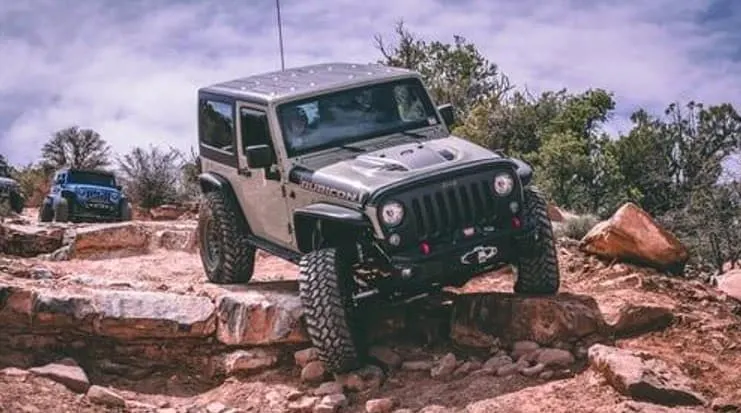
If you intend to enter off-roading, you need to acquire the knowledge of the terminologies that will be used in understanding off-roading processes. For instance, in this context, terms like wheelbase, locking differentials, approach angle, departure angle, and traction control are prominent. The details of these terminologies are given in the later section to help the newbies get into off-roading with ease.
1.1. Understanding The Locking Differentials:
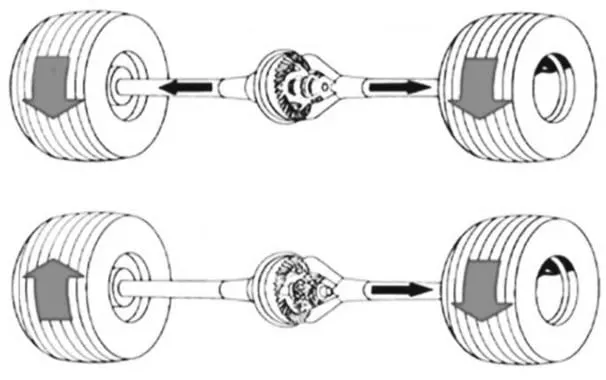
The term locking differentials are used to understand the power distribution mechanism of off-road vehicles. In simple words, it is referred to as the power that any wheel of the vehicle is receiving, and by adjusting locking differentials, you can give more or less power to the wheel as required in the situation.
Understanding locking differentials is essential to get into off-roading, and that is because, if you know this process, you can easily adjust the power distribution of your wheels. For example, if your vehicle gets stuck somewhere, and you need more power at one wheel and less at the other, understanding the locking differential mechanism will allow you to do so.
As a result, the wheel which requires more power will be getting more, and which requires less will be getting less, helping you get out of the situation.
1.2. Approach and Departure Angles:
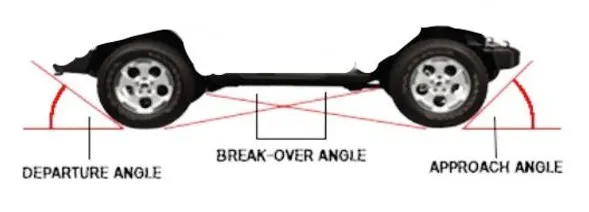
After understanding the terminology of locking differentials, the next major terminology that goes into off-roading understands the approach and departure angles. Approach and departure angles are referred to the angles that a vehicle tire makes when it approaches an obstacle and when it intends to cross it, respectively.
Both of these angles are crucial for off-roader because the understanding of these angles determine whether the vehicle is capable of overcoming an obstacle or not?
For instance, the normal approach angle between a wheel and the obstacle is equal to 30 degrees; if the angle exceeds 30 degrees, the vehicle will find difficulty in crossing over the vehicle. Similarly, this is also true with the case of departure angle. The driver must be capable of knowing whether the vehicle will move smoothly over the obstacle or if it gets over it like a see-saw.
1.3. Understanding Traction Control:
Traction control is also an important process that needs to be understood to get into off-roading. Traction Control is defined as the mechanism that prevents your vehicle from sliding or skidding from the road. Your vehicle has this automatic system that applies brakes to control the vehicle if it loses its control. So you need to have a good understanding of this process and how your vehicle acts to prevent it from getting out of control.
1.4. Wheel Base Size:
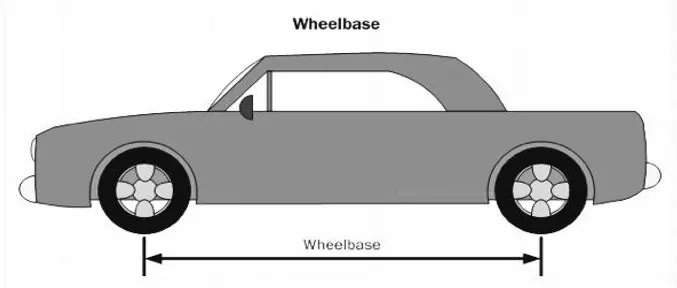
The following terminology that you must understand and must equip yourself with is ‘wheelbase.’ The wheelbase is the distance between the centre of your rear wheel with that of the front wheel. This distance creates some implications for the performance of off-road vehicles.
For instance, the shorter wheelbase is more effective in terms of off-roading because the vehicle will move more easily over the obstacles without getting a bottom hit – as the rear wheel also climbs simultaneously with that of the front wheel.
What is a Good Ground Clearance for Off-Roading?
In the longer wheelbase, the vehicles are more spacious and more stable as the center of gravity is close to the ground, which makes the chances of a roll-over less or null. But, if the wheelbase is longer, it has its challenges as well, like it will get stuck on an obstacle with a higher break-over angle. So you need to understand the wheelbase size and the logic behind their usage.
We have given a table with major wheelbase sizes and their impact on vehicle stability and performance while off-roading.
| Wheelbase | Impact |
|---|---|
| 80-96 inches | Less stable, but best for overcoming obstacles |
| 97-108 inches | Common in some off-road vehicles due to relative stability as compared to 80-96inch wheelbase |
| 108-117inches | Most common wheelbase; greater stability and relatively less potential for overcoming hurdles |
| 117+ inches | Not suitable for off-roading |
2. Knowing About Off-Road Vehicles:
As you have come to know about the terminologies and process that goes into off-roading, the next step to get into off-roading is to know about the details of off-road vehicles. For instance, you need to know what sort of modifications and customization your vehicle demands in correlation to the terrain you’re following.
Likewise, you understand that if you are buying an off-road vehicle which one will be suitable for you and which type also. All these details are covered in this section for paving your way into off-roading.
2.1. General Understanding of Off-Road Vehicles:
So before we move into specific guides, we first need to establish a general understanding of off-road vehicles. Off-road vehicles are generally four-wheel drive, all-wheel drive, and two-wheel drive – depending on their utility. All-wheel drive vehicles are those which are based on power distribution to each wheel of the vehicle.
Like, the driver has the option to control the power to each wheel separately. The four-wheel-drive scenario is a little bit different, and that is, the power distribution can only be distributed to either all four-wheel or a pair depending on the required amount of traction needed.
Two-wheel drive is a normal regular drive vehicle, and it is primarily used for low-intensity off-roading – not without some external modifications.
To further your general understanding, spare parts, external support, and customized modification are also very important. And that is for the reason that off-roading is most of the time uncertain, and the challenges nature poses, most of the time, require some external elements for support of the vehicle. To mention some of these external add-ons:
Wheels, external winch, snorkel, elevated bumpers, and customized suspension are prominent.
2.2. SUVs:
After developing a general understanding of off-road vehicles, the first specific category is off-roading SUVs. Off-roading SUVs are defined as utility vehicles that are made with specific standards like 33inch tires, high ground clearance, and enhanced suspension to sustain off-road terrains.
Additionally, these vehicles include auto and manual controls that help while off-roading. For instance, mostly off-road Suvs have controls for locking differentials, and they have in-built suspension controls to support your off-road journey.
The Best Small and Mid SUV for Off-Roading in 2021
For characterization, the off-road SUVs are divided into two categories that include:
2.2.1. Truck Based SUVs:
The first category in terms of off-road SUVs is truck-based SUVs. Truck-based SUVs are low utility pick-ups and mid-range trucks designed to travel on rugged plains and streets. These low utility vehicles include primary features of off-roading like they have the adjustable air suspension and have the all-terrain tires installed already.
But what is unique about these trucks is that they have these features in stock as they left the manufacturing plant. It implies that you need not worry about any adjustments or modifications that have to be added externally. It is an already made complete package for off-roading.
To quote an example truck-based SUV, Chevrolet Colorado ZR2 can be befitting. Chevrolet Colorado comes with an inbuilt adjustable air suspension of up to 4 inches, and it has 31 inches all-terrain Gura Track Tyres installed in it. In addition to it, it is also equipped with electronic locking differentials, power transmission, and higher ground clearance for increased stability and control for off-roading.
2.2.2. Car Based Crossovers:
The second category of SUVs is car-based crossovers. Crossovers are hybrid vehicles that mean primarily they are made for a street drive. Still, certain characteristics like higher ground clearance, air suspension, and four-wheel drive allow them to align in off-roading vehicle sections as well.
Following this, the crossovers generally are street vehicles, and even with their off-road capabilities, they cannot be taken into intense off-road trails. So this category is not for those interested in intense off-roading, including steep climbing or descending.
To take an example of crossovers, Land Rover Discovery proves an ideal case. Land Rover Discovery has long been a competitive SUV with outstanding off-road performance. Its new model, launched in 2019, comes with an addition of air suspension and with a ground clearance of almost 11.11 inches that makes it an exceptional off-road crossover.
Meanwhile, it does have response controls and progress control to improve the off-road journey.
The Land Rover Discovery is equipped with cruise control, climate control, and a high tech-user interface in terms of street drive.
| Car-based Crossover Features | Truck-based SUV Features |
|---|---|
| The design resembles family cars and vans | The design resembles trucks and load-carrying vehicles |
| Unibody vehicle | Unibody vehicle |
| Greater passenger space | Less passenger space (when compared) |
| Better performance on streets as compared to off-road | Better performance on off-roads as compared to on streets |
2.3. ATVs and UTVs:
ATV is defined as All-Terrain Vehicle, and UTV stands for Utility Terrain Vehicles. Both of these vehicles come in the off-road vehicle category, yet both have distinguished usage and makeup. ATVs are made up of a three or four-wheel design with a driving seat in a straddle position.
ATVs are primarily made for recreational and off-road adventure purposes. While the UTVs are not made for recreational purposes, they have work-related roles to perform, and their design is subjective to the nature of the task UTVs have to perform. Some common UTVs include excavators, tractors, and golf carts.
Making a Choice, Then?
As you have understood the types of off-road vehicles, it becomes relatively easy for you to choose the vehicle you intend to use. In most cases, people go for crossovers, and the reason is the readiness of crossovers as an off-roading vehicle and as a street vehicle both.
We have only covered the major characterization of off-road vehicles so that you can align your way into off-roading. These categories will help you enter into a whole world of off-roading, and from then on, you can further narrow down your priorities and vision.
3. Following Guidance Programs and Joining Groups:
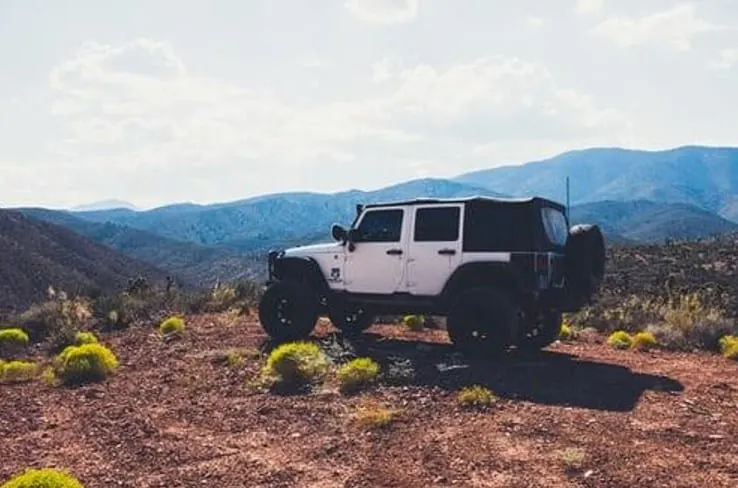
The last step to get into off-roading is to join off-road communities and guidance programs. This step will allow you to master all the required skills and requisites that are essentials of off-roading and help you build up knowledge shared by experts.
For instance, the driving techniques, the parts modifications, and the path analysis that every new or old off-roader has to make can be learned in this phase. We have listed some details in this section based on information shared by experts. This information will help you understand off-roading from the ground and help you develop some presets for better driving and performance.
Additionally, these tips are related to the off-road drive for newbies; the major impediment is the driving technique. And if they learn it well, their path to off-roading will become a lot easier.
3.1. How to overcome Inclined Hurdles:
The first driving technique you need to learn to make your way into off-roading is overcoming incline hurdles. Incline hurdles in logs, stones, and landslides are among the most common challenges for an off-roader. So, to deal with this, you need to understand that it is always better if you approach the hurdle by steering the wheel close to the hurdle.
For instance, if the left front wheel is closer to the hurdle, you need to steer the front wheel in the same direction as the hurdle with constant and gentle pressure on acceleration. Meanwhile, you need to take care of the vehicle tipping over the hurdle, and you can avoid it by keeping the vehicle as straight as possible while overcoming the hurdle.
3.2. How to Cross Water Bodies:
The next major driving technique to learn before off-roading is how to cross water bodies. Usually, water bodies are not very difficult to cross because what it requires is a gentle but constant movement of your vehicle. Avoid rushing and stillness, and you are going to be out of it easily.
But things become complicated when you do it without judging the water level and what lies beneath the water. In many instances, the drivers neglected to check the water level and waterbed. As a result, the vehicle got stuck in the water, and in the worst cases, their vehicle slinked into the water.
So, the driving tip here is to always check the water level and the surface beneath it before attempting to cross it. Likewise, you need a slow and constant movement if you intend to cross water bodies safely.
3.3. How to Drive on Snow:
To drive on snow, the general rules are simple yet crucial. The number one rule while driving on snow is to use only snow wheels. Snow wheels are specially designed for gaining extra traction on snow, and their performance is optimal in extreme temperatures. So you won’t find much difficulty while trekking on snow.
The number two rule is never to apply sudden brakes on snow. You must not apply sudden brakes on snow because of the reason that if you apply sudden brakes, chances are your vehicle will roll over, and you may get into an accident. So the best method is if your vehicle starts skidding to move your wheels into the counter direction. That will help to slow the speed as well as counter its movement – as brakes do.
Conclusion:
To get into off-roading, what you need is passion and your knowledge-seeking behavior. Other than these behavioral instincts, you need to have a good command over off-roading manuals, language, and the systems that have made a man pull vehicles over mountains, rivers, and woods.
Also Read:
What Type of Suspension is Best for Off-Roading? Top 10 Brands
Is Off-Road Driving Legal? Know the Vehicle Compliance
Frequently Asked Questions (FAQs):
How do I find someone to go off-roading with?
Finding someone for off-roading is not a difficult task. You can join off-roading groups, communities and clubs where you can find your off-road fellow. You need to be social, and the rest is already done.
How much lift do I need for off-roading?
Off-roading does not require some hard lifting. You need to reduce the air pressure in wheels( 20-25 psi when trekking on rocks or hard surfaces) and
Not more than 8 psi when moving over sand or loose surfaces.
How do I get started off-roading?
To get into off-roading, besides having an off-road vehicle, you need to have a good understanding of off-road terminologies and processes. You need to have in-depth details of off-road vehicles, including yours. And you need to learn all the driving techniques that go into off-roading along with the essential tips listed by experts.
What do you wear to go off-roading?
Since off-roading is extreme motorsport, you need to wear protective clothes like a protective jacket, protective helmet and gloves for safety. Likewise, you need to wear a seat belt all the time for protection in case of an accident.

This is Surya. I am an experienced off-roader. I have been off-roading for many years across several terrains. I am passionate about 4×4 driving and want to share my knowledge and experience with others.
My goal is to provide you with the most comprehensive and unbiased information about off-roading.
I curated this article through my personal experience and expertise, and I hope it helps you with what you are looking for.

 (+91)9123743026
(+91)9123743026
 24/1 Nibedita Sarani. M.B. Road, Kolkata- 700051, India
24/1 Nibedita Sarani. M.B. Road, Kolkata- 700051, India
Does Off-Roading Void Warranty? How to Check Your Vehicle – Offroadhandbook
Friday 17th of December 2021
[…] Are Hybrid Vehicles Good for Off-Roading? All You Need to KnowHow to Get into Off-Roading? Know the Complete Prerequisites […]
The Top 10 Jeeps for Off-Roading in 2021- Best in Business – Offroadhandbook
Monday 30th of August 2021
[…] Do You Need a 4×4 for Off-Roading? Know the Pros and ConsHow to Get into Off-Roading? Know the Complete Prerequisites […]
The 10 Best Off-Road SUVs Under $10000- Details with Analysis – Offroadhandbook
Thursday 5th of August 2021
[…] Read Details on How to Get into Off-Roading? Know the Complete Prerequisites […]